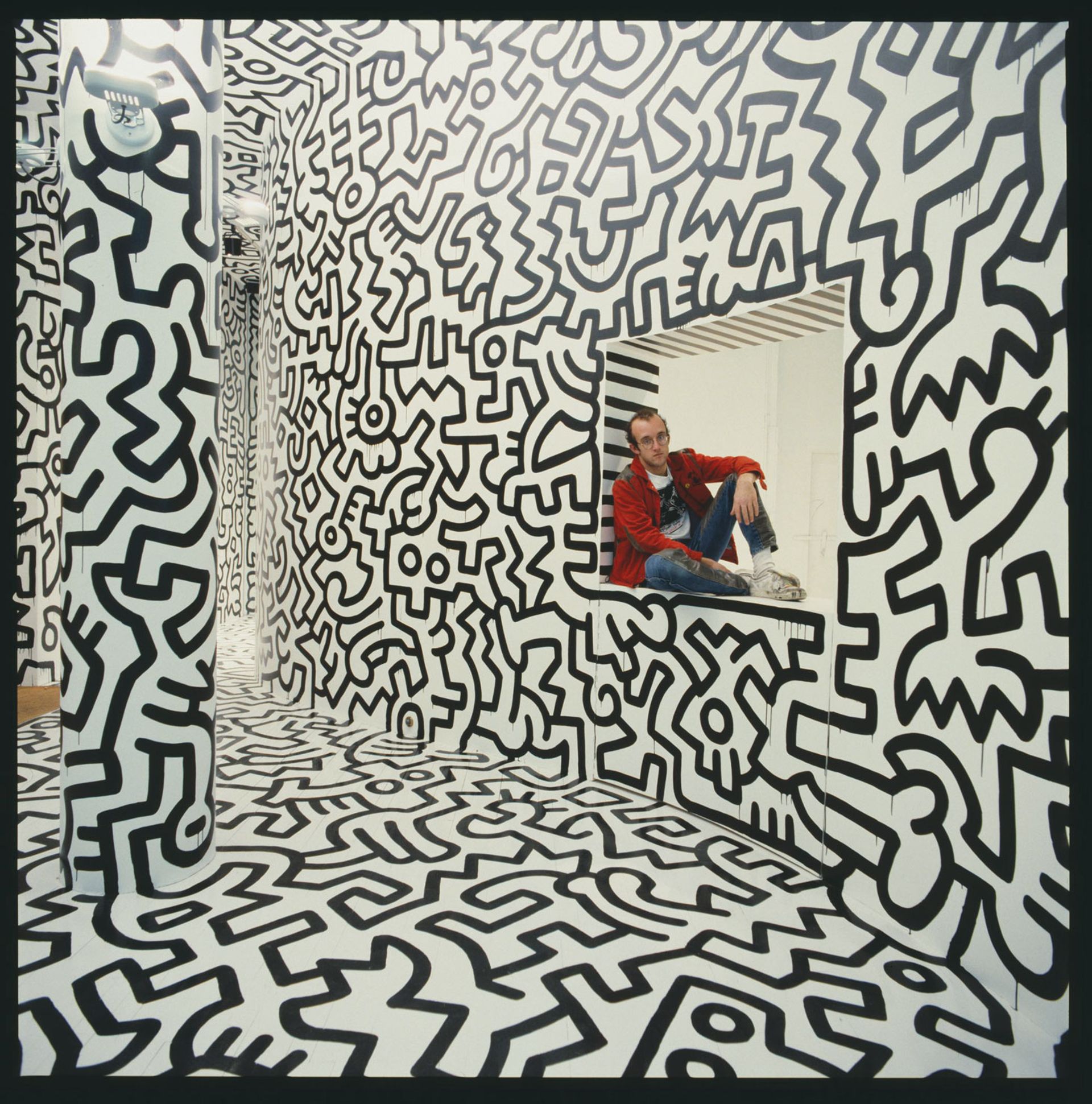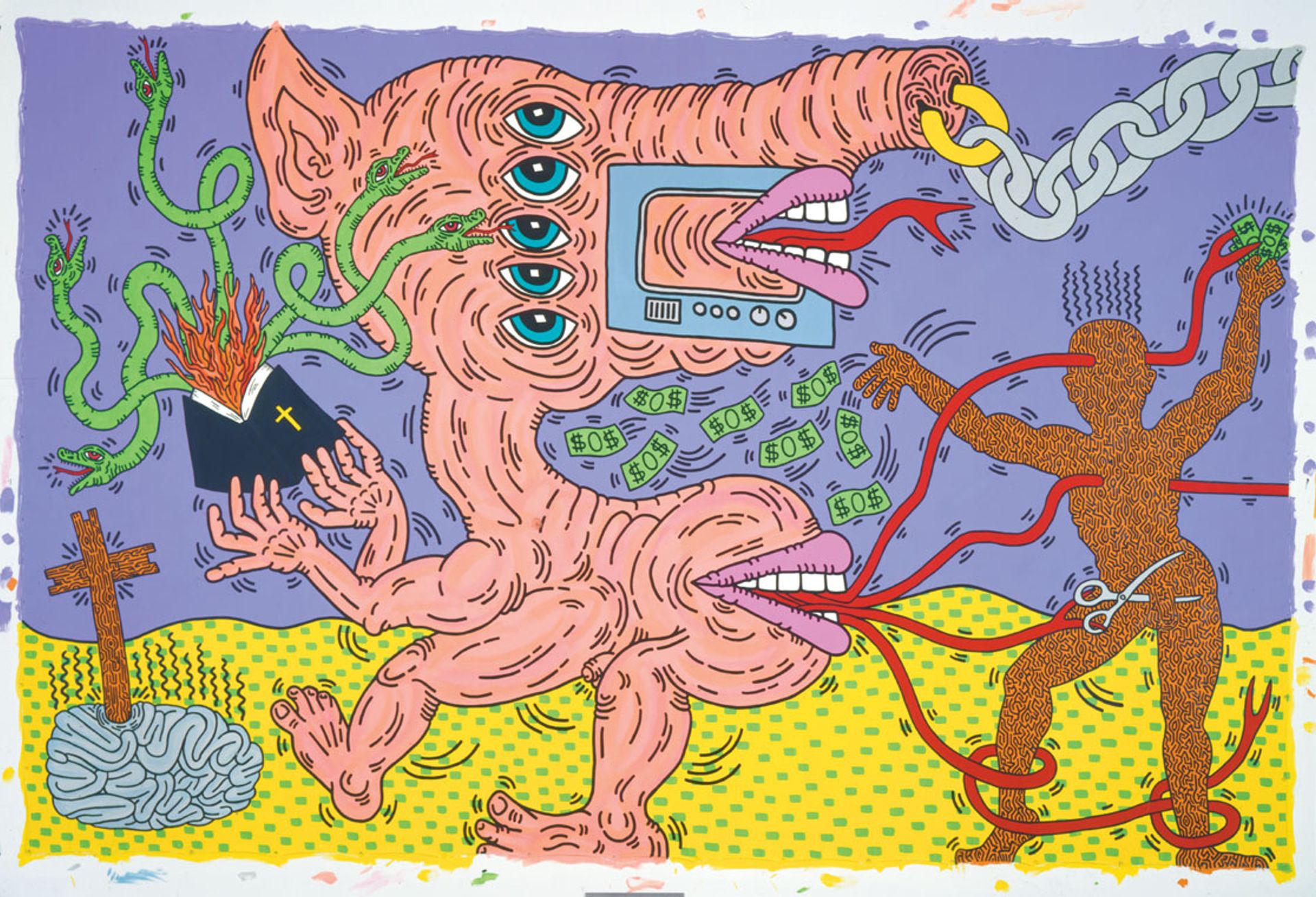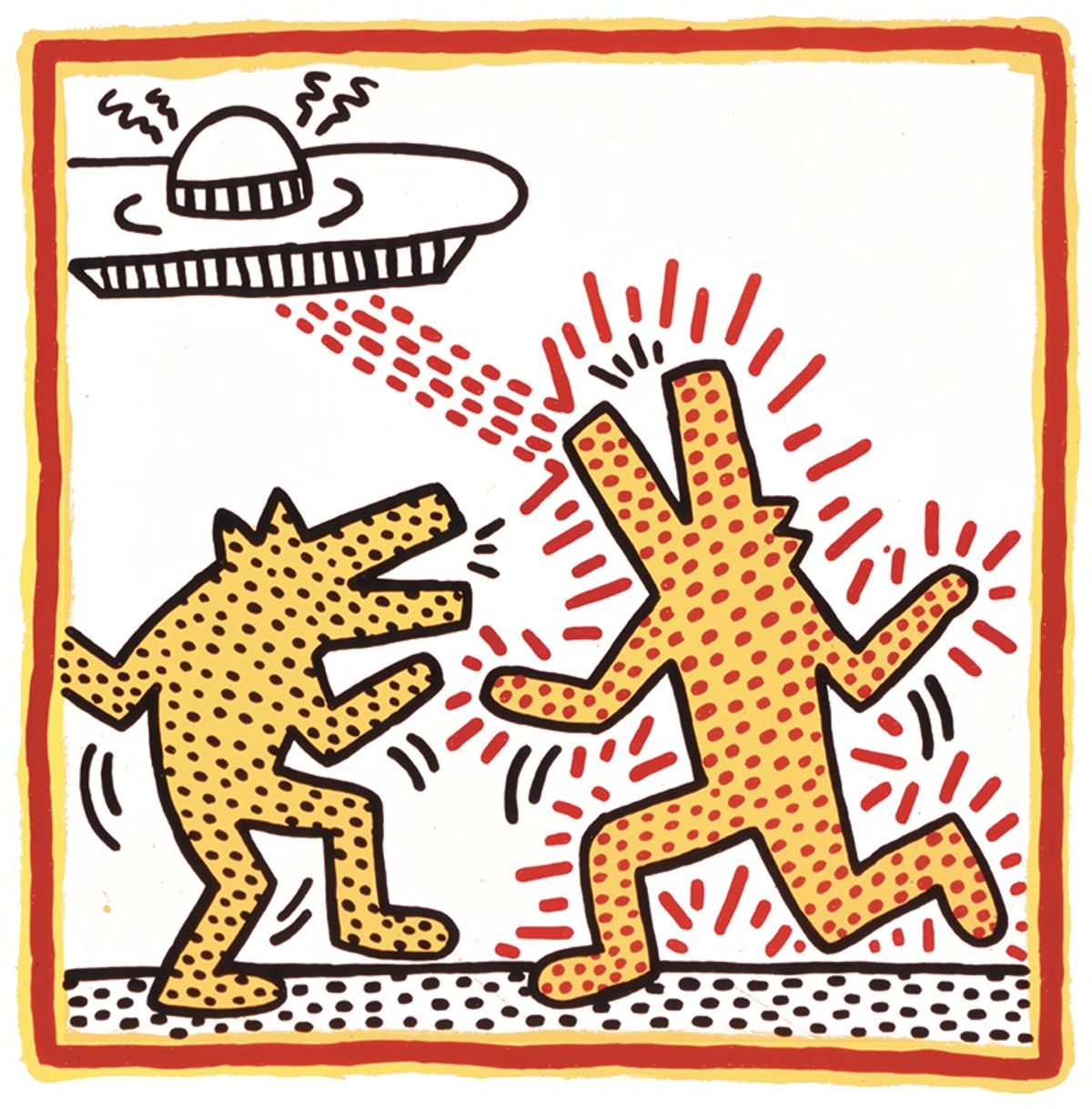Long-time friends of Keith Haring, many of them fellow artists, give their insights into how the late street artist developed his practice, what shaped his vision and add new aspects to his legacy in an exhibition and accompanying catalogue at The Broad museum in Los Angeles next month.
The show is the latest re-assessment of Haring’s work, which was largely ignored by museums before a major retrospective at the Whitney Museum of American Art in New York in 1997.
The new exhibition of more than 120 works, including items of archival material, draws on Haring’s personal journals from the late 1970s when he was a student at the School of Visual Arts (SVA) in New York until 1988, two years before he died aged 31 from an Aids-related illness. The artist Kenny Scharf met Haring in 1978 at the SVA, forming a New York art community that also included Andy Warhol and Jean-Michel Basquiat.

Tseng Kwong Chi's photograph of Haring in his Pop Shop, New York, 1986 Photo: © Muna Tseng Dance Projects Inc. Paintings: © The Keith Haring Foundation
Scharf tells The Art Newspaper: “The kind of culture that Keith was embracing, no one was doing that back then—opening his Pop Shop [a New York boutique selling affordable merchandise], and the idea that art was for everyone. We took a lot of flak for wanting to really express that attitude because a lot of people back then, and still [today], think that art for everyone meant art dumbed down.”
Cartoons were a big part of Haring’s democratising approach. In the catalogue, Kermit Oswald, the former president of the Keith Haring Foundation, highlights the influence of Haring’s father, Allen, who was an amateur cartoonist. “Long before Keith even knew who Mickey Mouse was… he was already drawing these things with his dad, which I think had a profound influence on him. By the time he started digesting culture like the Smurfs, he had already been playing this game with his dad, so to speak.”

Haring's Untitled (1985) © Keith Haring Foundation
Haring created “a universal language with elements of cartooning as well as semiotics”, Scharf adds. Key felt-tip works loaned by the Keith Haring Foundation are included, such as four untitled works from 1981 that show cartoon characters resembling Mickey Mouse.
The exhibition will also include a selection of works by Haring’s friend and collaborator Tseng Kwong Chi, who took more than 5,000 photographs of drawings Haring made on the New York subway between 1980 and 1985. The curator and former New York City commissioner of cultural affairs Tom Finkelpearl writes in the catalogue: “When the cops came while [Tseng] was shooting, Muna [Tseng’s sister] told me, ‘Kwong Chi would pretend to be a tourist—“Oh, subway, so interesting”. It was almost like guerrilla warfare’.”
• Keith Haring: Art is for Everybody, The Broad, Los Angeles, 27 May-8 October


